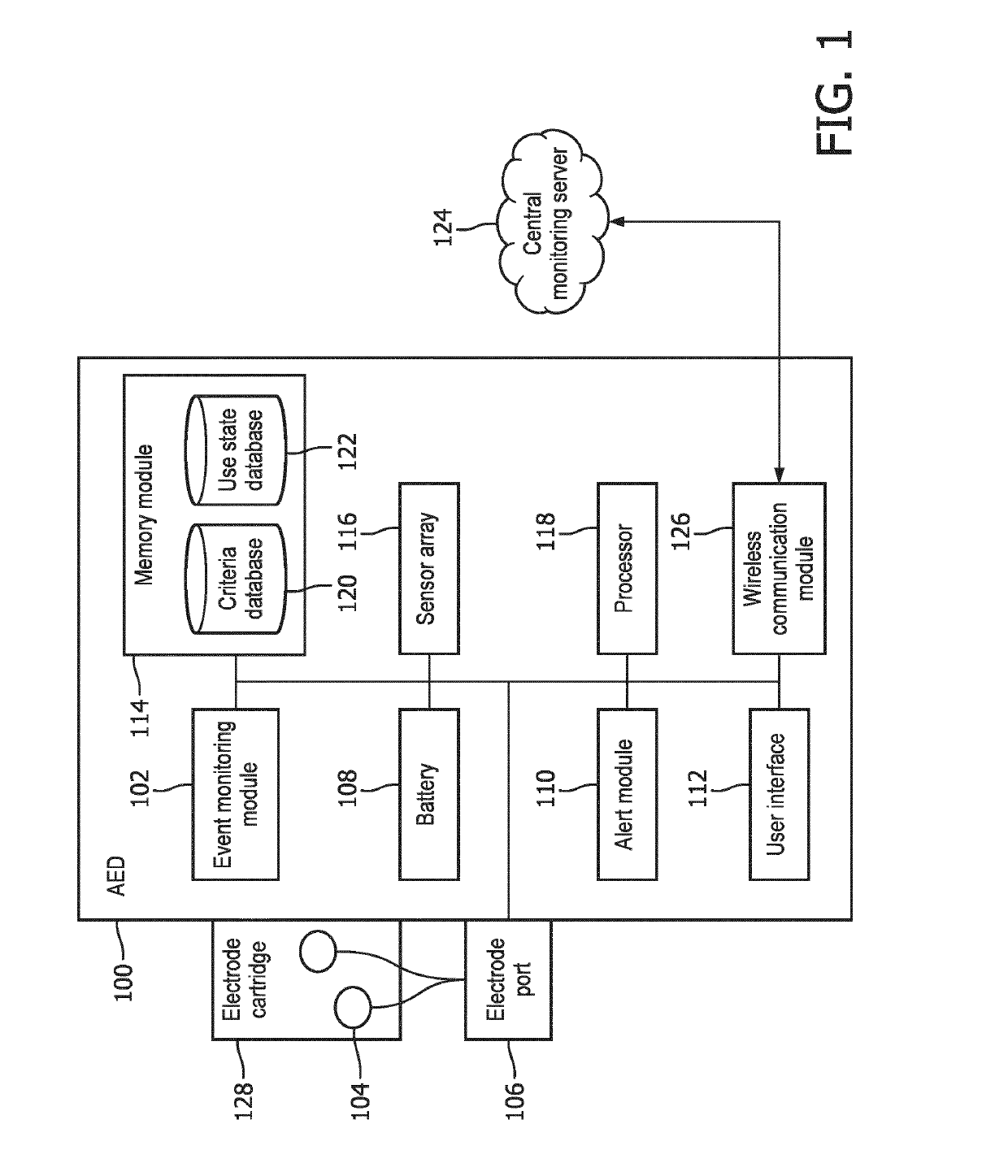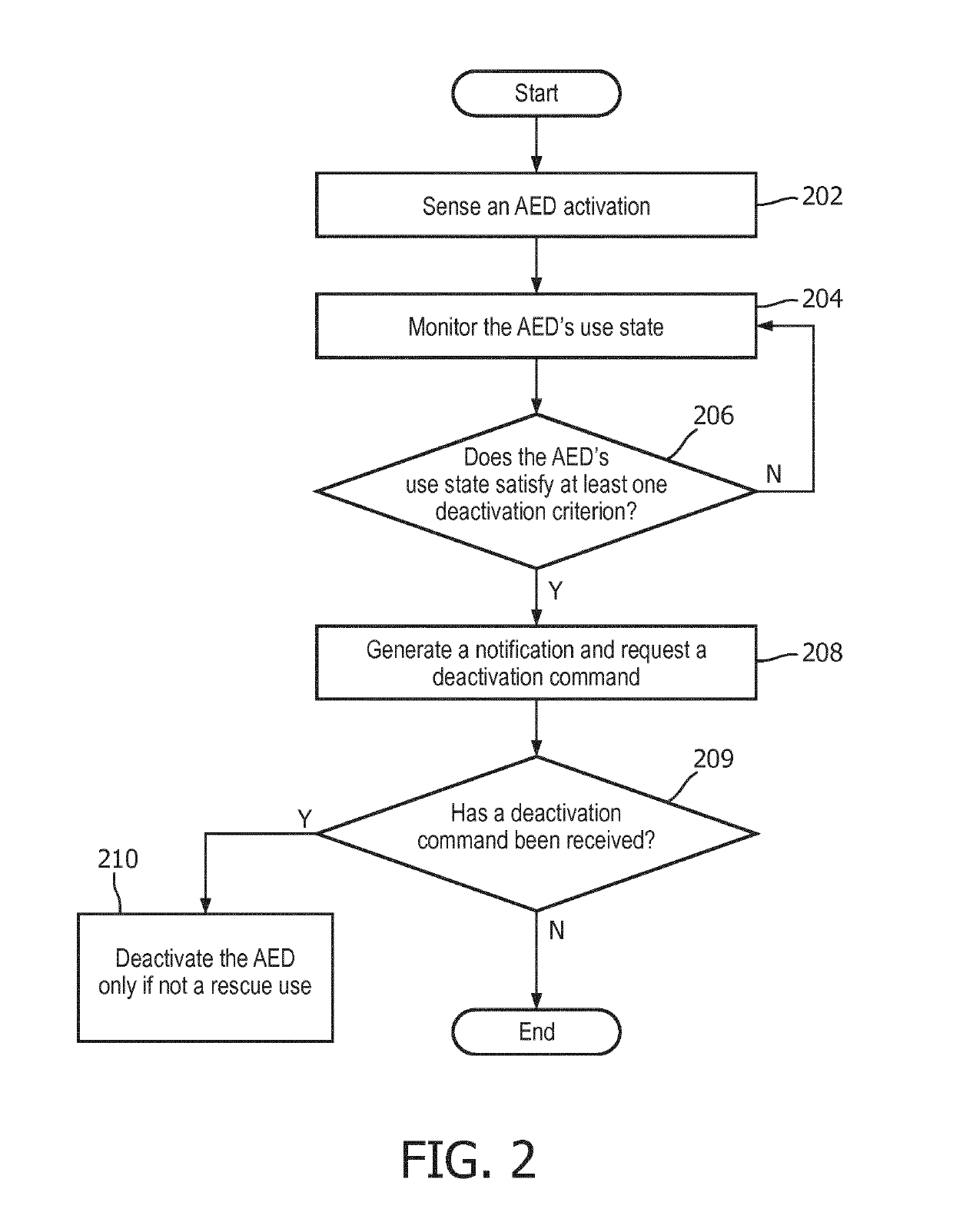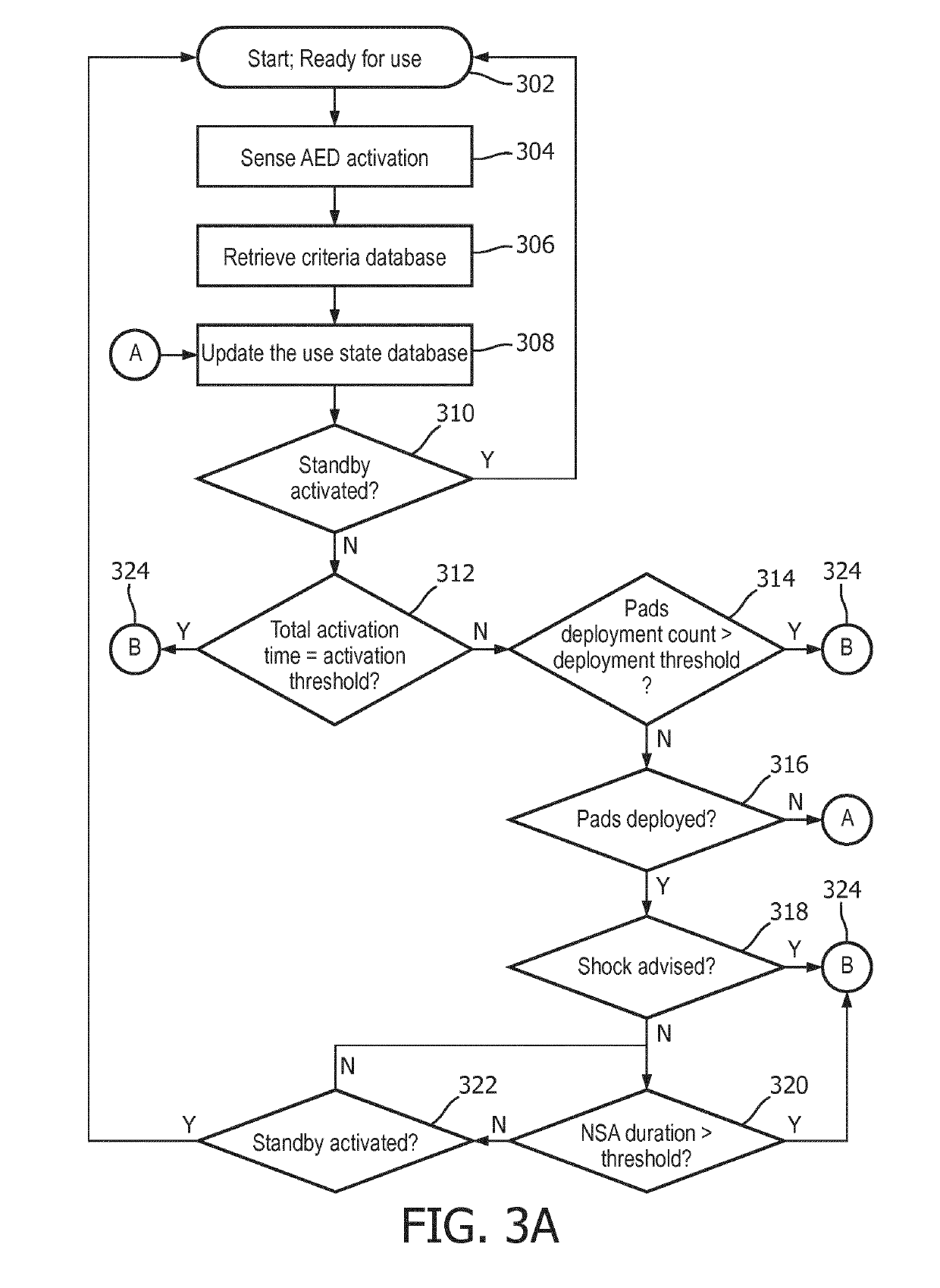Single use detector for an automated external defibrillator (AED)
an automated external defibrillator and detector technology, applied in the field of single-use detectors for automated external defibrillators, can solve the problems of user hesitant to use the aed, owner unfamiliarity, etc., and achieve the effects of less chance of a fault occurring, improved reliability, and reduced ownership costs
- Summary
- Abstract
- Description
- Claims
- Application Information
AI Technical Summary
Benefits of technology
Problems solved by technology
Method used
Image
Examples
Embodiment Construction
[0016]The following are definitions of terms as used in the various embodiments of the present invention.
[0017]The term “single use AED” as used herein refers to an AED in which after a single use, the AED will require a maintenance service to replace one or more disposable components such as battery and electrode pads or require the replacement of the AED with a new unit.
[0018]The term “use state” as used herein refers to information relating to one or more AED features or functionalities, including activation, deactivation, switching ON, switching to standby mode, electrode pad deployment, “Shock Advised” event, and “No Shock Advised” (NSA) event, among others.
[0019]The term “event monitoring module” as used herein refers to one or more hardware and software for monitoring the AED's use state. The event monitoring module includes battery monitors, timers, environment sensors, and circuitry, among others, to enable the monitoring of the AED's use state.
[0020]The term “Ready for Use...
PUM
 Login to View More
Login to View More Abstract
Description
Claims
Application Information
 Login to View More
Login to View More - R&D
- Intellectual Property
- Life Sciences
- Materials
- Tech Scout
- Unparalleled Data Quality
- Higher Quality Content
- 60% Fewer Hallucinations
Browse by: Latest US Patents, China's latest patents, Technical Efficacy Thesaurus, Application Domain, Technology Topic, Popular Technical Reports.
© 2025 PatSnap. All rights reserved.Legal|Privacy policy|Modern Slavery Act Transparency Statement|Sitemap|About US| Contact US: help@patsnap.com



